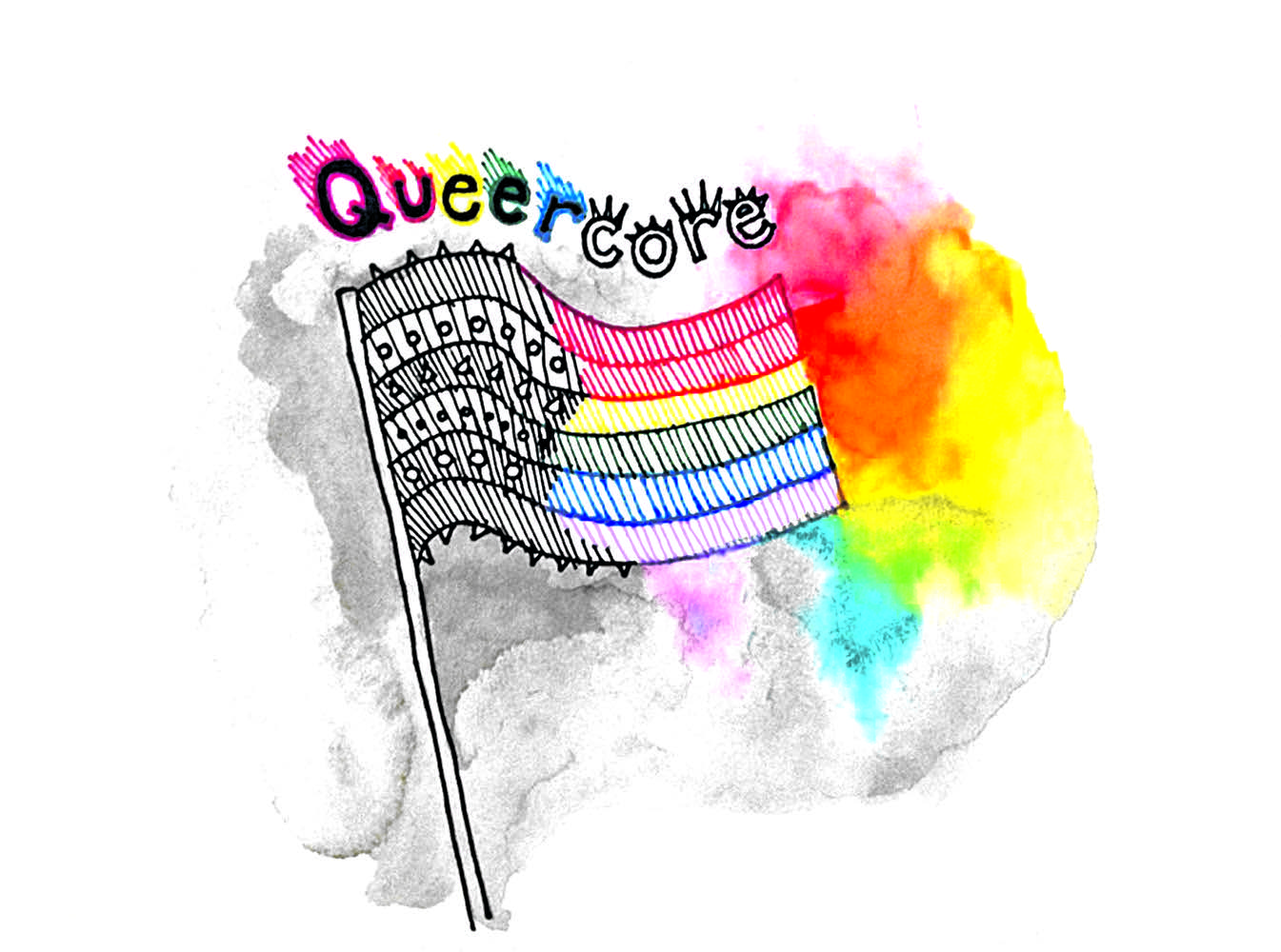Queercore, perhaps one of the last surviving offshoots of punk rock that has remained true to its anti-capitalist, anarchist, DIY roots, recently hosted its largest gathering ever, an event that brought together hundreds of queercore bands, speakers, artists, and thinkers in Chicago. But as the more radical members of the queercore community transition into mainstream LGBTQ (and simply mainstream) communities through events of this size, queercore may face the same fate as punk. One day, will it too be co-opted by mainstream society enamoured with its aesthetics?
1970s and 1980s punk rock is generally associated with tight jeans, leather jackets, and the inconsolable anger of The Clash. Queercore, which was primarily rooted in Toronto in the late 1970s, railed against the Man but focused more on the gross marginalization of queer people throughout North America. Of course, the concept of ‘queer theory going mainstream’ is nothing new. But as queercore in particular does so, can it remain the most radical offshoot of punk, or punk at all? Does the question even matter, given the benefits of these ideas being considered by mainstream society, or should queercore always seek to destroy the status quo (even as it becomes less oppressive)? Essentially, should queercore remain punk, or seek more recognizable success as a mainstream activist group?
Of course, the concept of ‘queer theory going mainstream’ is nothing new. But as queercore in particular does so, can it remain the most radical offshoot of punk, or punk at all?
In order to answer these questions, an examination of queercore’s roots in punk rock and its subsequent divergence from the genre is required. Punk rock, founded by members of oppressed working classes in Britain, arrived as musical opposition to the polished rock of the early 1970s, seeking to create a more lo-fi, accessible sound that anyone could produce. It was harsh, but easy to nod along to. Early punk rock rejected the classism, bureaucracy, and corporate vice that came with the intensive production of early seventies rock: the greed of enormous record labels that stifled creativity to sell records and the shitty contracts that musicians of that era were often given in order to make money for the men upstairs. Punk rock rejected all of these as instruments of a manipulative oligarchy without a plan B, thus beginning its association with anarchist movements in the UK and North America.
Queercore emerged from the same vein, with the further understanding that it was not merely lo-fi, impoverished musicians who were being marginalized by the music industry, but queer musicians as well. Queercore’s founders, several runaway teens from the Toronto area, fell in with the punk scene and sought to express the same torment they felt from society. But even punk rock, a scene bent on rejecting the status quo, refused to accept these more radical, queer punks. Not only that, but early queer punks found themselves rejected by 1970s LGBTQ activists as well, who were fighting to gain recognition of queer people, as ‘normal’ and ‘mainstream’ folks who were just like the couple next door.
But even punk rock, a scene bent on rejecting the status quo, refused to accept these more radical, queer punks.
Relegated to the fringes of both societies, early groups like Fifth Column, The Raincoats, the Dicks, and Vaginal Davis began to play small punk rock venues. J.D.’s (initially standing for Juvenile Delinquents), a popular LGBTQ zine in the Toronto area, helped to evolve and grow the burgeoning queercore genre. J.D.’s essentially became the call to arms and official bulletin of the queercore scene, establishing events throughout Toronto, Chicago, and London, publishing biographies of queercore bands, and urging the LGBTQ and punk scenes to become less oppressive. In fact, queercore had initially been called ‘Homocore,’ but changed its name to move away from the confines of gay and lesbian as monosexual identities, at J.D.’s writers’ urgings. J.D.’s survived as the main bulletin of queercore well into the 1990s, until internet chat rooms took over the task of connecting queer punks across the globe, under a thread name recognizable to youths across the web: “Queer Punks.”
Today, as queercore becomes more popular, it faces the ‘punk’s dilemma.’ Events like the one in Chicago thrust queercore into the mainstream scene. Queercore loses its status as something ‘truly punk’ when it throws events that draw such large numbers, which in punk lexicology, make it officially a ‘poseur’ genre. So much of the punk identity is reliant upon identification as the outsider, as someone others don’t want around, as undesirable. When punk is accepted, even in a limited way, it is no longer punk, making it very difficult not to become a ‘poseur’. Larger events allow more conservative influences to water down queercore’s 1970s rhetoric. But perhaps the tides will turn, and the radical philosophy of the queercore scene will trickle down, acting as another player in the fight against the oppression of the LGBTQ community. Even if queercore loses its official status as punk, one hopes we will remember worthier things from the genre rather than vague anti-pop sentiment, leather jackets, and tight jeans.
